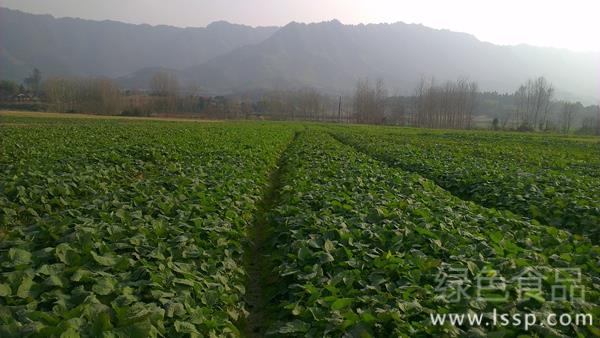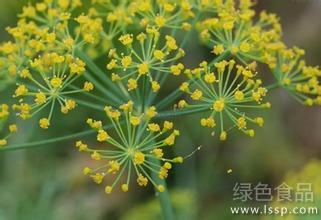Causes of wheat yellowing before winter and its control and management measures

Wheat overwintering
In recent years, the yellowing of wheat before winter is common, which is mostly caused by soil preparation, poor sowing quality, improper field management and so on. If the management measures fail to keep up, it will have a great impact on wheat yield. Therefore, the causes of the occurrence of yellow wheat seedlings before winter should be carefully analyzed and corresponding management measures should be taken in order to promote the seedling to become strong and reduce the harm to the minimum.
First, yellow and weak seedlings formed by soil preparation and poor sowing quality. The reasons are as follows: first, the quality of corn straw returning to the field is poor, the amount of straw is large, and there is no deep ploughing, resulting in straw scaffolding in the plough layer, resulting in unreal seeds in the soil or sowing directly on the straw, competing for water and fertilizer with wheat seedlings in the process of straw decay, and the seedlings are yellow and thin; second, when preparing the soil, the soil is suspended, resulting in sowing too deep, running through the air and moisture, and the wheat seedlings are yellow and weak. Management measures: this kind of wheat field should be suppressed in time (if the wheat field is too deep, the soil should be cleared first), so as to stabilize the soil and promote the healthy growth of wheat seedlings.
Second, yellow seedlings formed by soil pollution. The reasons are as follows: first, the amount of herbicide used in the previous crop is too large, or the time of application is too late, and the residue in the soil exceeds the standard, resulting in the yellowing and dwarfing of wheat seedlings. The roots of this kind of wheat seedlings are mostly yellow and brown, the roots are few and short, and the growth of wheat seedlings is inhibited and yellowed and thin. The second is the yellow seedlings caused by fertilizer damage. On the one hand, the amount of fertilizer applied is too large. At present, the base fertilizer of wheat is mostly high nitrogen (more than 20%) compound fertilizer, and the plough layer is generally shallow (generally 12-17 cm in our city). The distance between seeds and fertilizers is relatively close, and when the amount of fertilizer is too large, especially in the same sowing field of fertilizer, salt damage occurs due to high fertilizer concentration, resulting in root burning and rotting roots; on the other hand, some urea in the production process, due to improper treatment of biuret exceeding the standard, root burning, seedling burning, resulting in fertilizer damage. Management measures: this kind of etiolated wheat field can be alleviated by spraying Jiesiling or plant growth regulator + foliar fertilizer.
Third, diseases and insect pests harm the formation of yellow and dead seedlings.
1. Dead seedlings caused by underground pests: in recent years, with the continuous expansion of the area of straw returning to the field, the underground pests showed a rising trend, and the harm in the field was more serious, especially in the plots with poor quality of soil treatment and chemical seed dressing, one month after wheat sowing, yellow seedlings, dead seedlings, lack of seedlings and broken ridges began to appear in the field, and the injury rate of wheat seedlings in serious fields was more than 5%. Management measures: for light-occurring plots, organophosphorus (phoxim or chlorpyrifos) can be sprayed with water to spray the root base of damaged wheat seedlings, and extend 1-2 meters to each side for pickling treatment; in heavy fields, poisonous soil can be made of soil treatment agent or above organophosphorus chemicals to spread along ridges, and the effect of intertillage is better.
2. Yellow seedlings harmed by wheat aphids and wheat spiders: the leaves yellowed due to the absorption of leaf juice by both of them. at present, red spiders are dominant in wheat fields, and pyrethroids can be used for spray control.
3. Yellow seedlings and stiff seedlings caused by wheat cyst nematode: it mainly harms the roots, turns the crop roots into globular nodules, inhibits crop growth, the lower leaves turn yellow from the leaf tip, and then the whole leaves turn brown and dry, and the diseased plants grow weakly and tiller less. there are few grains in the spike, which seems to be lack of fertilizer. The occurrence area and harm degree of the disease have gradually increased in the past two years, and some fields have shown obvious symptoms at present. The disease can be treated with thiazophos or avermectin granules.
4. Wheat root and base diseases: wheat total erosion, root rot and sheath blight damage the root and stem base, hinder the transport of nutrients and water, resulting in the yellowing of wheat leaves. Triazoles such as triadimefon and tebuconazole can be used for stem base spray control per mu.
Fourth, the density is too high: uneven sowing or excessive sowing rate makes the population density in the wheat field too large, which will also lead to the yellowing of wheat. This kind of wheat field should be planted quickly and fertilized in time.
Fifth, the formation of rigid seedlings yellowing caused by wet damage: it mainly occurs in the soaked fields with heavy soil and low-lying terrain. This kind of wheat field should timely eliminate waterlogging, timely ploughing and loosening soil moisture, reduce field humidity.
Sixth, improper chemical weeding before winter to form yellow seedlings: first, a large amount of medicine is used. The weeds in wheat field before winter are small, and the low dose recommended by manufacturers can have a better control effect, but when chemical weeding is used, people still use the high dose of chemical weeding in wheat field after the year, or even blindly increase the dosage, resulting in the yellowing of wheat seedlings and even the death of wheat seedlings. Second, the water consumption is too small, generally 1 mu of 1 bucket of water (12-15 kg), the concentration of the solution is high, and when spraying, overlapping spraying back and forth, the phenomenon of grass re-spraying is common, resulting in serious herbicide damage. For this kind of wheat seedlings, light ones can be sprayed with brassinolide or high-quality amino acid foliar fertilizer; heavy ones can be sprayed with Jieshiling or 920 in time to relieve drug damage and promote seedlings to become strong.
- Prev

How to manage rape before winter to realize strong seedlings to survive the winter safely
How to manage rape before winter to realize strong seedlings to survive the winter safely
- Next

Cultivation Technique of Fennel in Greenhouse for Increasing Economic Benefit
Cultivation Technique of Fennel in Greenhouse for Increasing Economic Benefit
Related
- Fuxing push coffee new agricultural production and marketing class: lack of small-scale processing plants
- Jujube rice field leisure farm deep ploughing Yilan for five years to create a space for organic food and play
- Nongyu Farm-A trial of organic papaya for brave women with advanced technology
- Four points for attention in the prevention and control of diseases and insect pests of edible fungi
- How to add nutrient solution to Edible Fungi
- Is there any good way to control edible fungus mites?
- Open Inoculation Technology of Edible Fungi
- Is there any clever way to use fertilizer for edible fungus in winter?
- What agents are used to kill the pathogens of edible fungi in the mushroom shed?
- Rapid drying of Edible Fungi

